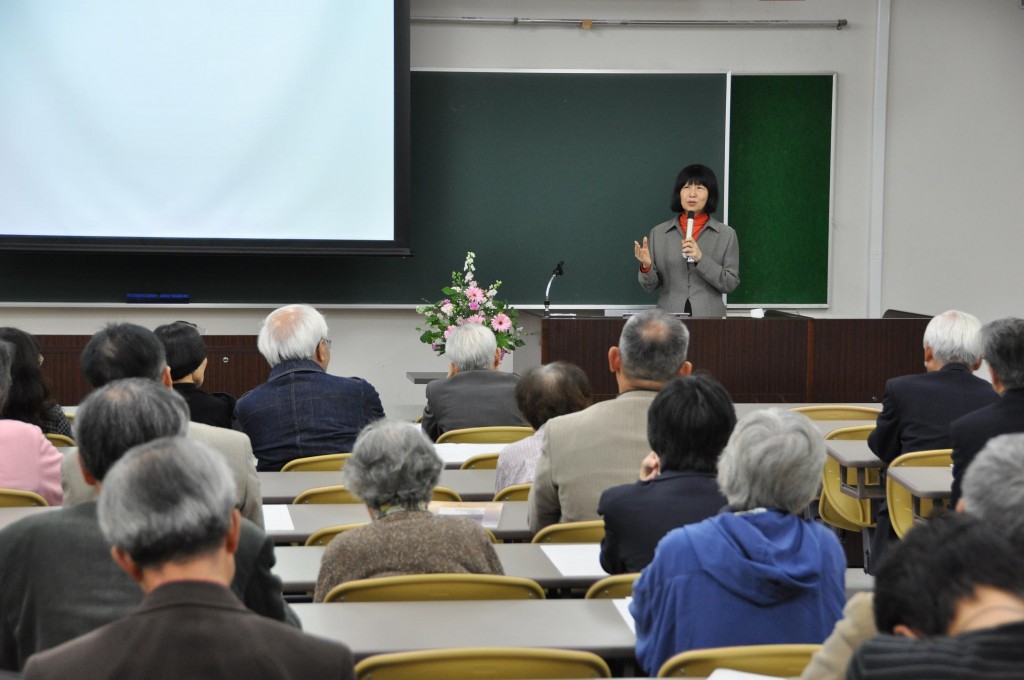Center for Interdisciplinary Study of Monotheistic Religions(CISMOR)Doshisha University
> Public Lectures > Contract, Oath, and Treaty in the Ancient Near EastPublic Lectures
Contract, Oath, and Treaty in the Ancient Near East
| Date: |
2009/10/17 14:00-16:00 |
|---|---|
| Place: | Room S21, Shisei-kan 2F, Imadegawa Campus, Doshisha University |
| Lecture: | Kazuko WATANABE, Professor of Toyo Eiwa Jogakuin |
| Summary: | |
|
This lecture began with the question as to what it means “to make a promise” and “to make people keep their promises.” We all make promises in different ways under different circumstances, as promises can take various forms, such as legal “contracts,” religious “oaths,” and inter-government “treaties.” The lecturer, Professor Kazuko Watanabe, looked up the word “keiyaku” (contract) in the Kojien Japanese Dictionary and the Iwanami Dictionary of Philosophy and Thought and confirmed that social (legal) contracts and religious contracts are treated as different concepts in general, even though both are “promises.” However, she questioned whether these contracts are completely different from each other. In detail, a number of concepts concerning human practices including “contracts” have been developed over the 2,500-year history of Europe since the ancient Greek age. But if we look to ancient Mesopotamia, which is the specialty of Professor Watanabe, human history spans 5,000 years. Furthermore, the excavation and interpretation of the clay tablets that contain fundamental information on ancient Mesopotamia and its vicinity (the ancient Near East) begun only in the late 19th century when the basic framework of modern concepts was almost complete. For this reason, the insights gained from the ancient clay tablets have made little contribution to our understanding of social and religious concepts. Already, hundreds of thousands of clay tablet texts have been published, and twice as many such texts are waiting in museums for their turn to be published. If we take into account yet-to-be-discovered clay tablet texts, we will have an infinite source of information that will have immeasurable impacts on our understanding of human history. This lecture centered on the “loyalty oaths of Esarhaddon” issued in 672 B.C. in the Assyrian Empire. The clay tablet containing these oaths was unearthed in 1955 in Nimrud in Assyria and its text was published in 1958 under the title of the Vassal Treaties of Esarhaddon, which Esarhaddon, a king of Assyria, made with the neighboring vassal nations to define their ruler-subject relationships. Researchers point out the similarities of the text of the Vassal Treaties of Esarhaddon to the suzerain treaties of the Hittite Empire dating around the 13th century B.C., the style of covenant in the Old Testament, and the “curses” in Deuteronomy, and attribute such similarities to the Kingdom of Judah, one of the vassal states of Assyria, being one of the parties to the treaty. In the view of Professor Watanabe, however, this text is not a “vassal treaty.” Rather, it is better described as a list of oaths imposed on brothers of the crown prince, royal family members, high officials of Assyria, and rulers of neighboring kingdoms to support the accession of the crown prince, Ashurbanipal, to kingship after Esarhaddon’s death. The oaths were given to gods, not the king himself, and supposed to be “signed” by Ashur, the supreme god of Assyria, on behalf of the gods. While the “royal family members” were the first to be required to make such an oath due to their likelihood to usurp the throne, the text contains references to unprecedented varieties of foreign gods and curses. Such an “international” nature of the text can be an indication that the king was desperate to pass kingship to his son and ordered his subjects to collect information on the gods and curses of the neighboring nations in order to draw up the text. The king thought that despite its hegemony, mere reference to Assyrian local gods and curses would not be compelling enough for the neighboring vassal states to remain faithful to their oaths. This means that if there was any connection between the “loyalty oaths of Esarhaddon” and the Bible, it was the Kingdom of Judah that influenced Assyria, not vice versa. In other words, it seems highly likely that Assyria introduced traditional curses from the Kingdom of Judah and its vicinity. Professor Watanabe concluded as follows. The text that appeared to be a “legal contract” drawn to demand the support of vassal states to the accession of the crown prince to kingship was, as it turned out, a “religious contract” in which the parties swore oaths to their gods. A “promise,” as a human practice, cannot be divided clearly into social (legal) contracts and religious oaths, and probably, the essence of a “promise” lies in the area where social contracts and religious oaths overlap each other. In the lecture, Professor Watanabe also shared elementary knowledge concerning clay tablets, such as the technique used to inscribe cuneiform on them and how these tablets were used and preserved. She also added other interesting and various pieces of information, such as: that the god Ashur originated as the deified city, Ashur, and as the god and the city expanded power, the city-state of Ashur emerged in the early 2000s B.C., followed by the state of Ashur (“Assyria” is the English name for Ashur), which existed until 612 B.C.; that the essence of an “oath” is a “self-curse;” and that it is difficult but interesting to try to figure out what is written on a clay tablet. Using slides, she spoke about her hands-on experience in easy-to-understand terms, and brought the audience into the fascinating world of ancient clay tablets. Tadashi Nakatani (Research Fellow, CISMOR, Doshisha University) |
|
|
*This lecture is given in Japanese *Admission Free, No reservation necessary *Inquiry: 075-251-3972(CISMOR) |
|
|
Program(Japanese) Handout(Japanese) |
|

